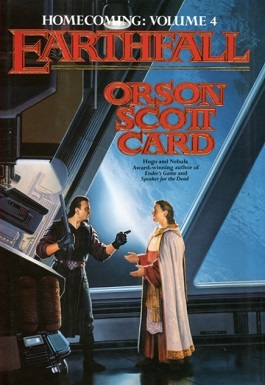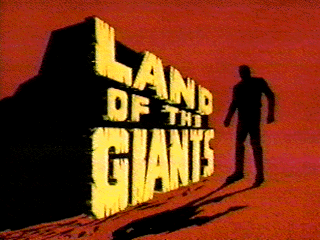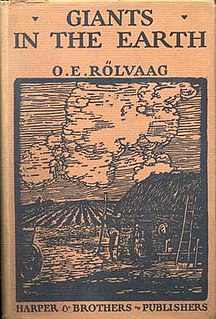
Pellucidar is a fictional Hollow Earth invented by American writer Edgar Rice Burroughs for a series of action adventure stories. In a crossover event between Burroughs's series, there is a Tarzan story in which he travels into Pellucidar.

The Fountains of Paradise is a novel by British writer Arthur C. Clarke. Set in the 22nd century, it describes the construction of a space elevator. This "orbital tower" is a giant structure rising from the ground and linking with a satellite in geostationary orbit at the height of approximately 36,000 kilometers. Such a structure would be used to raise payloads to orbit without the expense of using rockets. The novel won both the Hugo and Nebula Awards for Best Novel.

A Martian is a native inhabitant of the planet Mars. Although the search for evidence of life on Mars continues, many science fiction writers have imagined what extraterrestrial life on Mars might be like. Some writers also use the word Martian to describe a human colonist on Mars.

From the Earth to the Moon is an 1865 novel by Jules Verne. It tells the story of the Baltimore Gun Club, a post-American Civil War society of weapons enthusiasts, and their attempts to build an enormous Columbiad space gun and launch three people—the Gun Club's president, his Philadelphian armor-making rival, and a French poet—in a projectile with the goal of a Moon landing.
The Ender's Game series is a series of science fiction books written by American author Orson Scott Card. The series started with the novelette Ender's Game, which was later expanded into the novel of the same title. It currently consists of sixteen novels, thirteen short stories, 47 comic issues, an audioplay, and a film. The first two novels in the series, Ender's Game and Speaker for the Dead, each won both the Hugo and Nebula Awards, and were among the most influential fiction novels of the 1980s.

Earthfall (1995) is a science fiction novel by American writer Orson Scott Card. It is the fourth book of the Homecoming Saga, a fictionalization of the first few hundred years recorded in the Book of Mormon.

Endor is a forested moon in the Star Wars universe. The moon was the site of a pivotal battle depicted in Return of the Jedi.

The Food of the Gods and How It Came to Earth is a science fiction novel by H. G. Wells, first published in 1904. Wells called it "a fantasia on the change of scale in human affairs. . . . I had hit upon [the idea] while working out the possibilities of the near future in a book of speculations called Anticipations (1901)." There have been various B-movie adaptations. The novel is about a group of scientists who invent a food that accelerates the growth of children and turns them into giants when they become adults.

The Ships of Earth (1994) is a science fiction novel by American writer Orson Scott Card. It the third book of the Homecoming Saga, a fictionalization of the first few hundred years recorded in the Book of Mormon.

Land of the Giants is an hour-long American science fiction television program lasting two seasons beginning on September 22, 1968, and ending on March 22, 1970. The show was created and produced by Irwin Allen. Land of the Giants was the fourth of Allen's science fiction TV series. The show was aired on ABC and released by 20th Century Fox Television. The series was filmed entirely in color and ran for 51 episodes. The show starred Gary Conway and special guest star Kurt Kasznar.
Subterranean fiction is a subgenre of adventure fiction or science fiction which focuses on underground settings, sometimes at the center of the Earth or otherwise deep below the surface. The genre is based on and has in turn influenced the Hollow Earth theory.
The earliest works in the genre were Enlightenment-era philosophical or allegorical works, in which the underground setting was often largely incidental. In the late 19th century, however, more pseudoscientific or proto-science-fictional motifs gained prevalence. Common themes have included a depiction of the underground world as more primitive than the surface, either culturally, technologically or biologically, or in some combination thereof. The former cases usually see the setting used as a venue for sword-and-sorcery fiction, while the latter often features creatures extinct on the surface, such as dinosaurs, hominids or cryptids. A less frequent theme has the underground world much more technologically advanced than the surface one, typically either as the refugium of a lost civilization, or as a base for space aliens.

Non-Stop is a 1958 science fiction novel by Brian Aldiss. It was the author's first novel. Originally published by Faber & Faber, it was published in the U.S. by Criterion Books as Starship in 1959. The novel has been frequently republished in the UK and US and translated into French, German, Danish and other languages. The Signet and Avon US paperback editions were also published under the title Starship, but American publishers Carroll & Graf and Overlook Press have used the title Non-Stop.
The fictional portrayal of our Solar System has often included planets, moons, and other celestial objects which do not actually exist in reality. Some of these objects were, at one time, seriously considered as hypothetical planets which were either thought to have been observed, or were hypothesized in order to explain certain celestial phenomena. Often such objects continued to be used in literature long after the hypotheses upon which they were based had been abandoned.
Mars has two moons, Phobos and Deimos. Due to their small size, both moons were discovered only in 1877, by astronomer Asaph Hall. Nevertheless, they frequently feature in works of science fiction.

Hothouse is a 1962 science fiction novel by British writer Brian Aldiss, composed of five novelettes that were originally serialised in The Magazine of Fantasy & Science Fiction in 1961. In the US, an abridged version was published as The Long Afternoon of Earth; the full version was not published there until 1976.
Michael Grumley was an American writer and artist.

Land of Terror is a 1944 fantasy novel by American writer Edgar Rice Burroughs, the sixth in his series about the fictional "hollow earth" land of Pellucidar. It is the penultimate novel in the series and the last to be published during Burrough's lifetime. Unlike most of the other books in the Pellucidar series, this novel was never serially published in any magazine because it was rejected by all of Burroughs's usual publishers.

Dying Earth is a subgenre of science fantasy or science fiction which takes place in the far future at either the end of life on Earth or the end of time, when the laws of the universe themselves fail. Themes of world-weariness, innocence, idealism, entropy, (permanent) exhaustion/depletion of many or all resources, and the hope of renewal tend to dominate.

Giant of World's End is a fantasy novel written by Lin Carter set on a decadent far-future Earth in which all the world's land masses have supposedly drifted back together to form a last supercontinent called Gondwane. The book is chronologically the last in Carter's Gondwane Epic. It was first published in paperback by Belmont Books in February 1969. The first British edition was issued in paperback by Five Star in 1972. The book has been translated into Polish.















